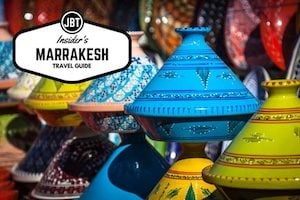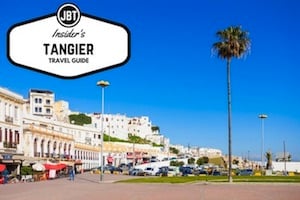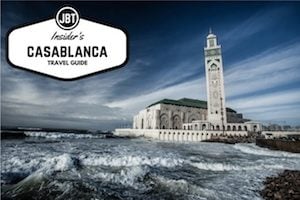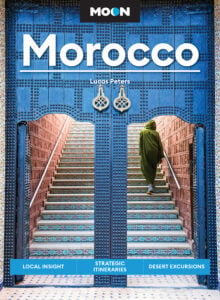 The best time to travel to Morocco depends on the type of experience you want to have. Planning to visit the desert? Hoping to surf? Is skiing more up your alley?
The best time to travel to Morocco depends on the type of experience you want to have. Planning to visit the desert? Hoping to surf? Is skiing more up your alley?
Despite extreme summer heat, the peak tourist season occurs in July and August. Temperatures in Marrakech and Fez can reach 100 degrees Fahrenheit during this time, and a day in the Sahara Desert can climb to an arid 120-degree heat.
Expecting to splash in the water?
With long coastlines along the Atlantic Ocean and Mediterranean Sea, water sports are popular among foreign visitors, national tourists and locals alike. Coastal breezes make temperatures in these areas feel more bearable throughout the summer, making it an ideal time for a holiday spent kayaking, surfing or relaxing on the beach. Think Essaouira, Agadir or Tetouan.
Hoping to catch some concerts?
For music lovers, the optimal time visit is in June, just before the swell of tourists and heat waves. The main attractions are the Festival of World Sacred Music in Fes in early June and Essaouira’s Gnawa and World Music Festival later that month.
Want a Northern Africa ski experience?
Those who prefer to bundle up for their outdoor recreation might enjoy landing in Morocco sometime between January and March. This is when the country’s two ski sites—Oukaïmden and Mischliffen—sport the best snow coverage. Africa certainly isn’t known for skiing, which can make cruising the Moroccan slopes an especially memorable novelty. However, novice skiers beware: Blizzards pass through frequently and few runs are groomed.
Looking forward to climbing sand dunes?
Riding camelback into the desert is among Morocco’s iconic tourist experiences, which is best experienced in the fall or late spring. The summer months come with suffocating heat, and winter temperatures bring biting chills and sharp winds. Although the desert starts to warm in March and April, these are the months when windstorms are most likely to attack. Regardless of the weather during the day, desert campers should be prepared for chilly overnight temperatures year round.
Planning a trek in the Atlas Mountains?
Trekking the stunning snow-capped Atlas is feasible all year, though hikers find it most comfortable in the spring and summer. Like typical mountain climates, weather at higher altitudes can change quickly and unpredictably. In general, the mountains are especially cold and rainy November through March.
Opting to focus on cultural experiences and urban exploration?
If you’re visiting Morocco primarily for cultural experiences and general sightseeing, consider scheduling your trip for the fall or spring when temperatures are mild throughout most of the country. Aim for April through early June or September through November. Wearing layers should keep you comfortable during these months whether you’re getting lost in the medinas of Morocco’s inland imperial cities or walking the promenade in a gusty coastal town.
In addition to weather in Morocco, holidays may also influence your schedule. For a cultural treat, you might opt to visit during a festival to observe local customs and join any festivities. In planning your adventure, remember that public transit (including taxis), shops and attractions may run on limited schedules on Muslim holidays. During the month of Ramadan (which changes each year), Muslims fast during the day. Although visitors are not required to do so, eating in public tends to be discouraged. And as with other holidays, transit and other establishments often reduce their hours of operation, especially toward the end of Ramadan.
Written by Shelley A. Gable, instructional designer and freelance writer.
Photo by Alexbip.








